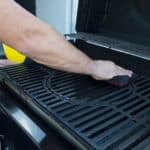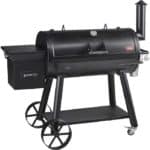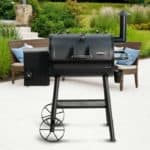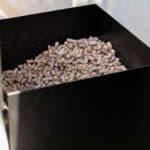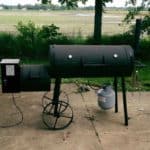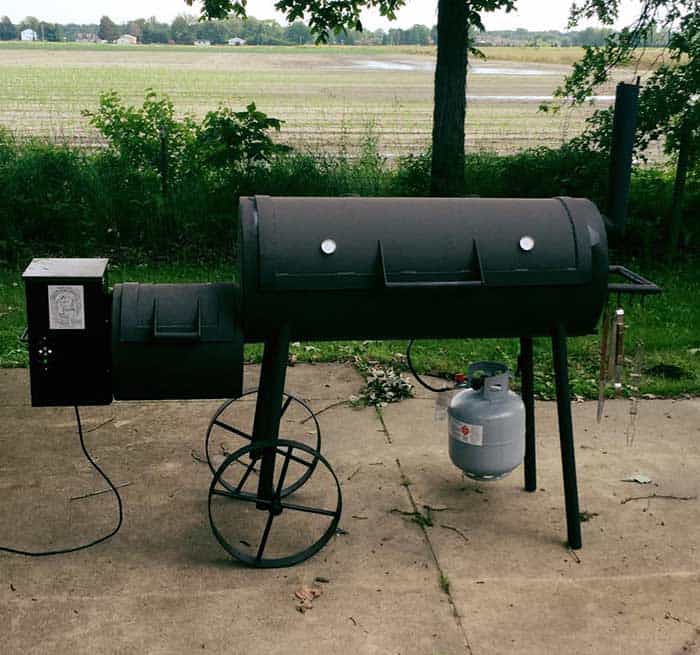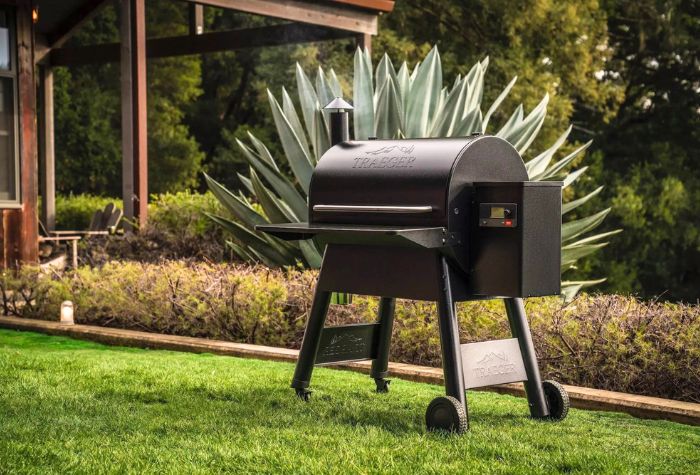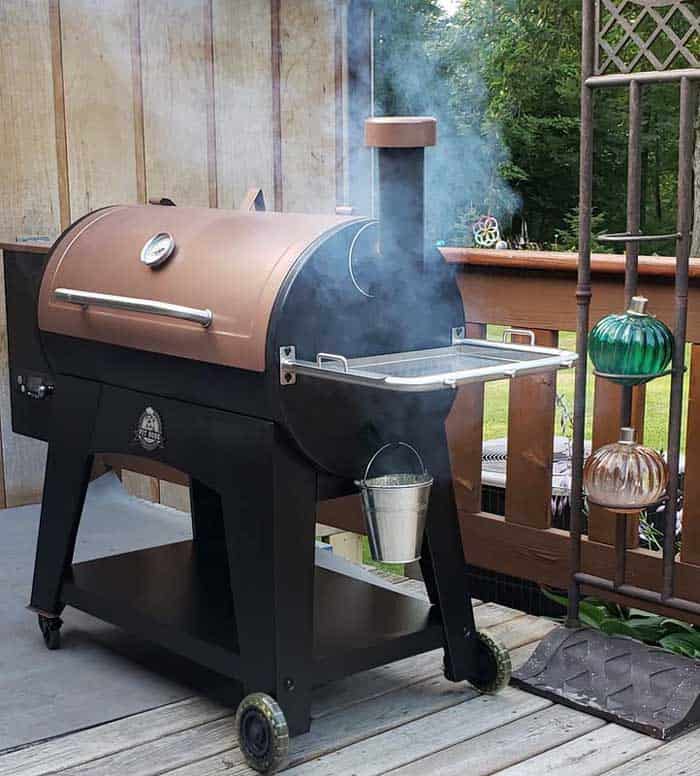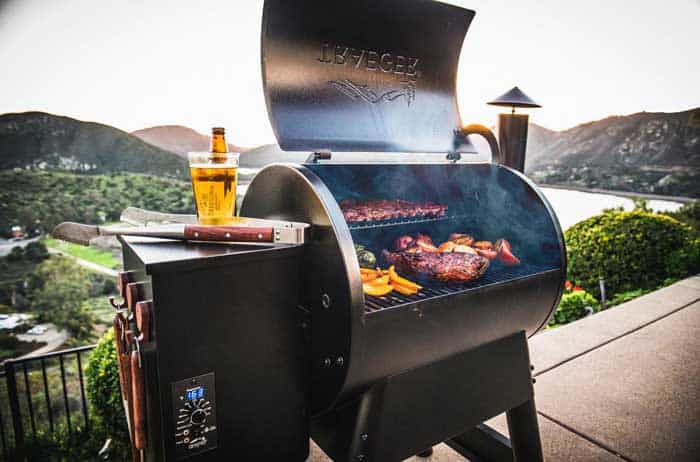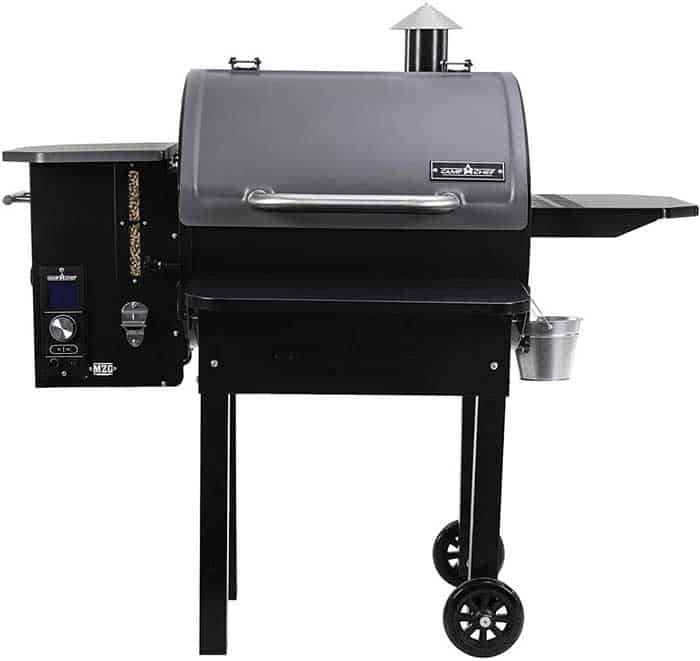Do you need a water pan in a pellet smoker? Find out if the simple barbecue hack could take your pellet cooking to the next level.
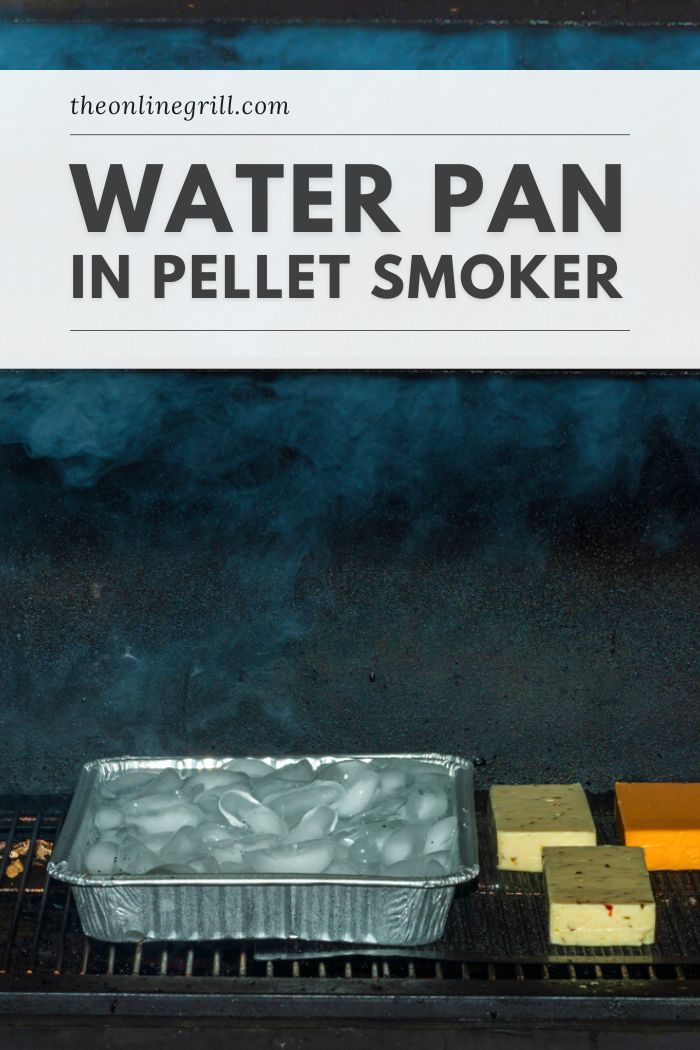
Many pellet grill pros claim that using smoker water pans helps them get better results, more tender meat, and even more flavor.
Is it actually a good idea? Does the science support the theories behind adding a water pan to your pellet smoker, or is it just a gimmick?
From improving moisture retention to stabilizing temperatures, discover everything you need to know about using a water pan in your pellet smoker. Let’s get cooking!
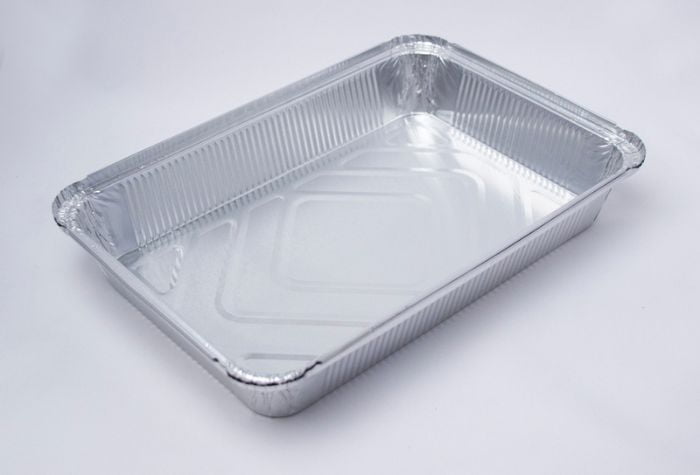
Should You Use a Water Pan in a Pellet Smoker?
Using a water pan in your pellet grill or smoker can be a great way to keep your meat moist and flavorful. It can even act as a heat sink, keeping the cooking temperature stable. Used correctly, water can also help to give an even cook throughout and reduce the chance of hot spots and flare-ups impacting your cook. A water pan isn’t essential when using a pellet smoker, but it has many benefits.
What is a Water Pan?
A water pan is a simple heat-proof container of water that sits within the smoker chamber, either underneath the grates or on them next to the food. This is not specific to pellet smoker grills, and water pans can in fact be used on any type of barbecue smoker.
A lot of people simply use an aluminum foil tray (like these on Amazon) for the water. This can usually withstand temperatures of up to 500°F before becoming damaged.
Unlike methods like spritzing your meat, the water does not come directly into contact with anything you are cooking. The water pan can sit alongside your meat on your smoker or grill’s grates, and the idea is that it adds more moisture to the air as it evaporates, which stops food from drying out. It can also provide a raft of other benefits, as we explore below.
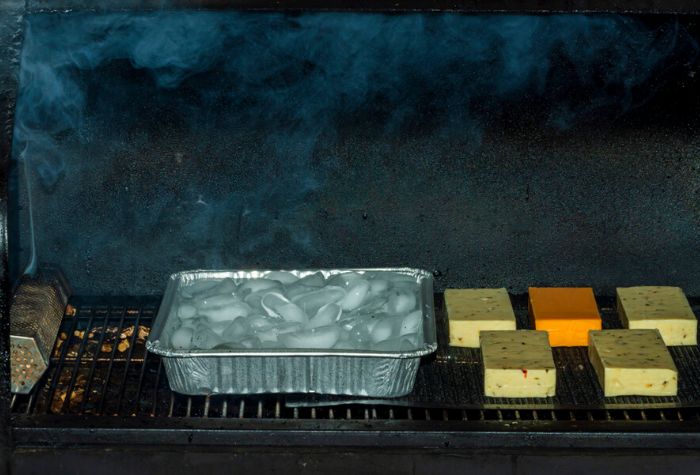
Reasons to Use a Water Pan in a Pellet Smoker
Let’s dive into the reasons behind using a water pan in your pellet smoker and explain some of the science behind it.
Meat Moisture
Over a long cook in a pellet grill, it is possible that meat can dry out. The water pan helps to avoid this by releasing moisture into the air. When the cooking chamber heats up, the water evaporates, and water vapor surrounds the meat and prevents the air within the smoking chamber from drying out.
A good analogy is to think of using a humidifier in an environment where the air is dry to prevent your skin from drying out.
In a pellet grill, hot compounds and molecules are released during combustion. There is a small chemical reaction going on, and this reaction can produce molecules that are carrying energy which can potentially burn meat. The presence of water means this energy may be absorbed by the water, reducing the burn risk and keeping the cook even.
Infusion of Flavor
We may be opening up a big debate here, but it is fair to include the infusion of flavor on the list of potential benefits. Many people swear by adding flavors to their water and the impact this has on the meat, but there is some debate on whether it actually has a significant impact.
You can add herbs, spices, and even fruit juices to try and impact the flavor of the meat. It stands to reason that some of these flavors are passed on. Some of the compounds within the added flavors (fruit juices, spices, etc.) can transfer over, as they are carried on the water vapor in the chamber and then may be absorbed by the meat. It is worth explaining that only some of the molecules will transfer, so don’t expect a drastic change of taste.
Temperature Stabilization
Water can provide stabilization in the temperature of the pellet smoker. It takes more energy to change the temperature of water than air. This means if there is a sudden spike in the combustion of the pellets, the presence of water means the heat in the chamber won’t increase as quickly.
The water you have added takes more time to release energy, so if the heat coming from the pellets dips, the water will continue to release its energy as heat, meaning the temperature doesn’t drop so slowly either.
If there are bursts of energy or inconsistency in the heat, the water will help to keep the temperature at its stable level. We all know how important a steady heat is in smoking. Stability is something that pellet grills are very good at anyway, but having water can add another way to keep a steady cook.
Preventing Flare-Ups
Flare-ups can totally ruin your cook. They are the short bursts of flame you get when grease or fat drips from the meat and comes into contact with coals, pellets, or a hot surface. It will usually instantly create a flame that can burn the surface of your meat.
Depending on where the water is placed, the water pan can act as an absorber for any splashes of grease that would otherwise cause flare-ups on the grill. For this to work, it needs to be placed under the meat which isn’t always easy in a pellet smoker.
Flare-ups are tough to control, as spraying water on the flames can actually feed the fire, as the oxygen within the water acts as fuel. With a water pan, you are potentially preventing flare-ups altogether.
Helps With the Smoke Ring
Many of us love to see a smoke ring on meat. It gives a pink ring on meats like brisket, and suggests that the meat was cooked slowly, and that the seasoning has managed to penetrate within the meat, not just on the surface.
If the meat stays moist then the exterior bark doesn’t go solid and crispy so quickly. This gives longer for the meat’s pigment and the gases and compounds from the burning pellets to react. This is what creates the smoke ring in the meat. It doesn’t directly change the flavor but it is a sign that the meat has been cooked well (and slowly).
The smoke ring occurs because the meat contains myoglobin, which usually turns brown when cooking. However, if there is enough time for a reaction, the nitric oxide released by the wood during cooking binds to the myoglobin. This is what lets it hold its color. So, a big smoke ring means that plenty of nitric oxide could bind with the meat before the rest turned brown. Many pitmasters and pellet grill professionals consider this to be a good sign.
Reasons Not to Use a Water Pan in a Pellet Smoker
There aren’t many significant reasons not to use a water pan, but there are a couple of small downsides:
- If there’s no dedicated space to add the water pan, it will go on the grill grates, taking up space that could be used for cooking.
- Water may need topping up, it will absorb energy from the grill until it reaches 212°F, if it reaches this temperature it will gradually turn to vapor and may need replenishing.
They’re really the only significant downsides, so there is very little harm in experimenting with water pans.
How to Use a Water Pan in a Pellet Smoker
- Add water to a pan. Any pan that is capable of going into the oven is fine, and it doesn’t matter too much what the design is. We recommend at least 2-3 liters go into the pan.
- Add any extras you want to experiment with, such as juice or spices.
- Find a spot for it. It may be that you can get it under the grill, but if not it needs to sit on the grates next to the meat.
- Cook as normal. Use your pellet smoker to cook your meat as usual.
- When finished, wait for the water to cool and dispose of it. You can even use it on the plants once it has cooled down, just make sure there isn’t fat within the water first.
Keep in mind that this can be used alongside the “spritz” technique, so you can still spray the meat with water or other liquids periodically.
The Final Word
While it isn’t essential to use a water pan, many people love the control it gives over moisture. Pellet grills are great for temperature stability, so the benefits of a heat sink are not always necessary, but releasing moisture over a long cook can keep the meat tender and stop it from drying out or even burning.

